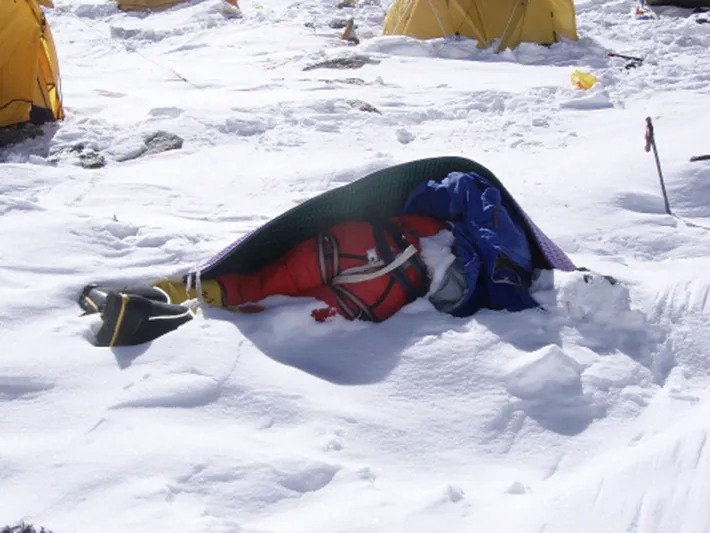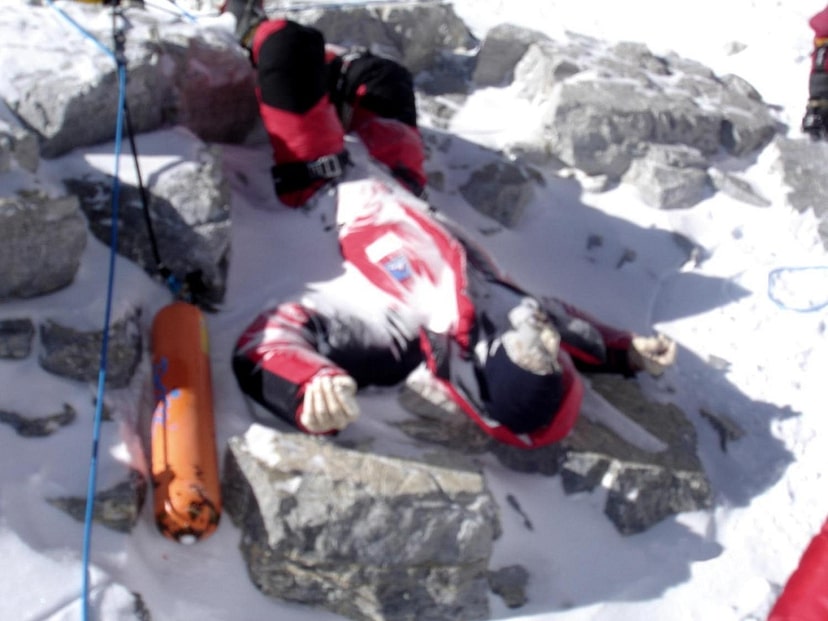
How many people died on Mount Everest?
Introduction
Standing majestically in the heart of the Himalayas, Mount Everest has lured adventurers and thrill-seekers from around the world for decades. However, along with its breathtaking beauty and allure, the world’s tallest peak also holds a darker truth: the mountain has claimed the lives of numerous climbers in its treacherous embrace. Similarly, in this article, we delve into the grim history of people who died on Mount Everest, shedding light on the staggering numbers, the stories behind the fallen, and the ongoing debate about the risks and rewards of conquering this formidable giant.
Overview
Mount Everest, the towering giant of the Himalayas, beckons adventurers with promises of triumph and tales of tragedy. Furthermore, Over 329 people have lost their lives climbing Mount Everest as of May 2023. Moreover, from the Sherpas who navigate its slopes to the climbers who risk all for its peak, Everest’s narrative weaves a complex tapestry of the human spirit, nature’s might, and the unrelenting pursuit of the extraordinary.
Amidst the staggering numbers and heartrending stories, Everest stands as a symbol of both achievement and humility, an eternal testament to the boundaries of human endeavor in the face of the world’s highest challenge.
The Grim Statistics: How Many People Have Died on Everest?
The question that frequently arises is: How many people have died on Mount Everest? The answer is both sobering and shocking. There have been over 329 confirmed deaths on its slopes.
The mountain’s unforgiving nature and challenging conditions have led to many fatal accidents, claiming both seasoned mountaineers and inexperienced adventurers.
Faces of Tragedy: Remembering Those Who Perished
Behind the numbers lie the stories of individuals who dared to dream of conquering Everest but paid the ultimate price. From the first recorded deaths in the 1920s to recent tragedies, each climber’s tale is a testament to the mountain’s unpredictability and danger.
Moreover, the list of people who have died on Everest includes experienced mountaineers, Sherpas, and even some famous personalities who sought to prove their mettle on the world’s highest stage.
Everest’s Annual Toll: How Many Die Each Year?

The death toll on Everest varies from year to year due to a myriad of factors, including weather conditions, climbing season, and the number of climbers attempting the ascent. On average, around 5 to 10 people die on Everest each year. The mountain’s death rate remains high when considering the relatively low number of climbers who attempt the perilous journey.
The Debate: Risk versus Reward
As the world mourns the lives lost on Everest, an ongoing debate rages on about the ethics and safety of climbing such a deadly peak. Critics argue that the commercialization of Everest has led to overcrowding, inexperienced climbers, and a disregard for the mountain’s dangers.
Proponents, however, defend the right of individuals to test their limits and experience the awe-inspiring beauty of Everest firsthand.
Lessons from Tragedy: Improving Safety Measures
In recent years, there have been efforts to improve safety measures on Everest. Climbing regulations, better training programs, and stricter expedition management have been implemented to reduce the risks associated with the ascent. Despite these initiatives, the mountain’s unpredictable weather and terrain continue to pose significant challenges.
A Call for Balance: Respecting the Mountain and Its Dangers
In the end, the history of deaths on Everest serves as a poignant reminder of the fragility of human life in the face of nature’s might. While conquering the world’s highest peak is undoubtedly a remarkable achievement, it also demands deep respect for the mountain’s power and the lives it has claimed.
As climbers and adventurers continue to seek their place atop the world, it’s essential to strike a balance between the pursuit of personal glory and the preservation of life.
In the Shadow of Everest: A Journey Filled with Challenges and Discovery
Embarking on a journey to the world’s tallest peak, Mount Everest is not just about ascending to great heights; it’s about confronting challenges, experiencing awe-inspiring beauty, and discovering the limits of human endurance.
Additionally, as you traverse the rugged terrain and navigate the unpredictable weather, here’s a glimpse of what you can expect to encounter on this remarkable expedition.
Physical and Mental Challenges
Climbing Everest is a test of both physical and mental strength. The journey demands rigorous physical training to acclimatize to high altitudes, endure harsh weather conditions, and navigate challenging terrains. From carrying heavy loads to dealing with altitude sickness, every step requires mental fortitude and determination.
Ever-Changing Weather
The weather on Everest is notorious for its unpredictability. Similarly, climbers can encounter everything from blinding blizzards to scorching sun, often within a matter of hours. This constant change requires adaptability and careful planning to ensure safety and progress.
Stunning Natural Beauty
Amidst the challenges, the journey offers breathtaking vistas and natural beauty that can’t be found anywhere else. As you ascend, you’ll witness panoramic views of snow-covered peaks, glaciers, and the vast expanse of the Himalayas that stretch out before you.
The Sherpa Culture
The indigenous Sherpa people play a crucial role in every Everest expedition. Furthermore, their knowledge of the terrain, invaluable support, and a strong sense of community provide an enriching cultural experience for climbers. Additionally, learning about their traditions and way of life adds a profound layer of understanding to the journey.
Personal Growth and Reflection
Climbing Everest is not just a physical endeavor; it’s also a journey of self-discovery. The isolation and the physical challenges push climbers to reflect on their motivations, strengths, and vulnerabilities. It’s a chance to learn more about oneself and find inner strength.
Risk and Decision-Making
The risk involved in climbing Everest cannot be underestimated. The journey necessitates critical decision-making, knowing when to push forward and when to turn back. Balancing ambition with safety is a constant challenge that adds an extra layer of complexity to the journey.
Summit Day: A Triumph of Willpower
Summit Day is the culmination of months of preparation and hard work. Moreover, the final push to the summit involves extreme physical exertion and mental focus. Furthermore, the sense of achievement upon reaching the top is a moment of triumph that few can comprehend fully.
A Humbling Perspective
Standing atop Everest, you’ll gain a perspective that’s hard to find elsewhere. The world below appears small and insignificant, reminding you of the vastness of nature and the universe. This humbling experience can reshape your outlook on life and priorities.
Environmental Responsibility
With the growing concern for the environment, climbers are increasingly conscious of their impact on the fragile ecosystems around Everest. Many expeditions now focus on Leave No Trace principles, ensuring that the natural beauty of the mountain is preserved for future generations.
A Lifelong Achievement
Completing the Everest journey leaves an indelible mark on those who undertake it. The memories, friendships, and lessons learned during the expedition become a part of each climber’s identity, serving as a testament to their determination and resilience.
FAQs
How many people have died on Mount Everest?
On Mount Everest, there have been over 329 climber deaths. The risks of ascending the mountain are exacerbated by its difficult terrain, erratic climate conditions, and height.
How many people die on Everest each year?
The number of deaths on Everest varies from year to year due to a variety of variables, such as the number of climbers trying the ascent and the weather. On Everest, 5 to 10 individuals per year pass away on average.
What are the main causes of death on Everest?
Avalanches falls, exposure to hazardous weather, sickness caused by altitude, and medical conditions made worse by the high altitude are the main causes of death on Everest. These elements, along with the mountain’s treacherous environment, add to the risks that climbers must deal with.
Who are the Sherpas, and what role do they play in Everest expeditions?
Sherpas are the indigenous people of the Everest region in Nepal. They are experienced climbers and have an essential role in assisting expedition teams. Sherpas help set up base camps, carry heavy equipment, fix ropes, and guide climbers through the treacherous sections of the mountain.
How long does it take to climb Mount Everest?
The duration of an Everest expedition can vary depending on factors such as the route chosen, weather conditions, and the climber’s experience. Typically, the journey takes around two months, including acclimatization periods and the final push to the summit.
Conclusion
Mount Everest, a symbol of human determination and exploration, also stands as a testament to the thin line between triumph and tragedy. Similarly, the deaths on Everest paint a complex picture of risk, reward, and the unyielding power of nature.
As we honor those people who died on Mount Everest, we must also acknowledge the ongoing challenges posed by the mountain and the broader conversation it sparks about the boundaries of human endeavor.
You May Be Interested In
Inquiry
If you want to know anything regarding the trip or any other issue, please feel free to ask us
